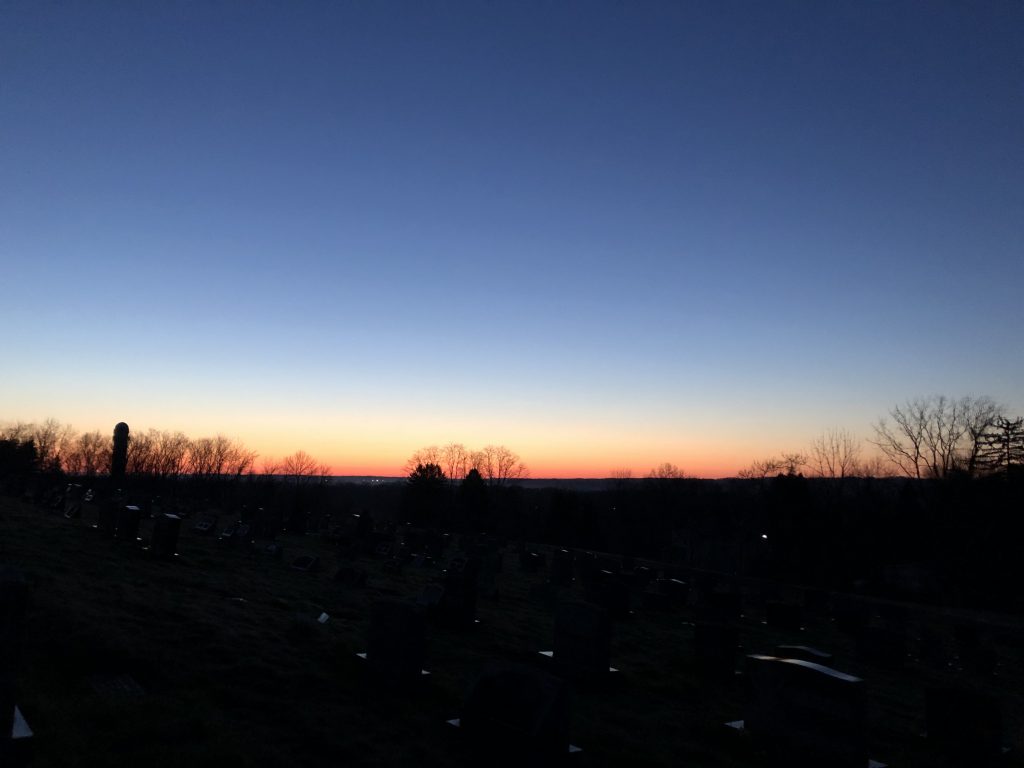Dear Friends,
After writing the first note last week, I realized that doing it helped me clarify some questions and focus my mind on practical approaches to the situation in which we find ourselves. So here is a second installment of Ruminations.
The experience of teaching my 6th grade via Zoom and Google Classroom has been a rich source material for observations both about myself and about a host of questions, some of which I began mentioning before: relationships; living vs trapped light; the experience of time; isolation as a physical experience and isolation as a soul/spiritual experience. Since I am intent on keeling these dispatches to no more than two pages, some of these will await further rumination until, well, further Ruminations.
We will begin with the good.
The first good difference is that I am surprised at how easy it has been to move to this online mode. Just the fact that we can begin at 10 instead of 8:15 means that the students are more rested and focused. And God’s (or some web designer’s) gift to teachers everywhere is the Mute All button. I would give my left arm to anyone who can replicate this for the real world without harming the speaking potential of the students 
A second good surprise is the advantages that online tools offer for some subjects. This may be completely obvious to teachers who have been using technology for years, but for me it is new. I teach astronomy at the moment, and by sharing my screen with the students I can show them various aspects of astronomy quite vividly, often more vividly than I would have been able to do with my words and drawings at school. The movement of the stars, for example, is much easier to show with the amazing Star Walk app than with diagrams and narratives. Likewise, the “dance” of the sun’s rising and setting points is simpler to demonstrate in this manner than I ever remember it being with blackboard alone.
A third good surprise has been the ease of communications with some of the quieter children. The option to ask a private question about an assignment through the app means that students who are usually reluctant to expose their uncertainty have a socially safe way to let me know that they need more clarity or an extra session of individual video chat. And speaking of individual video chats, that is the fourth pleasant advantage: I have every student scheduled for two one-on-one sessions with me each week. With some of them, these afford me a lot more personal time with them than I ever managed at school. The chats can last just a few minutes, but some have gone on for 20 minutes and covered both the material and more general concerns or issues that arose. It feels good to be available to them in this way.
OK, now that I have practiced positivity, let’s unload a little, too.
Connecting with human beings through screens is a terrible way to educate. Teaching, as I mentioned above, is ok, but educating? Not so much.
I had my class go out to see the sunrise on the one clear morning we had all week. They will go out in the evenings to see the beautiful constellations in the sky after sunset if we ever get a clear evening. But we can’t do the astronomy sleepover that my former classes enjoyed so much (if only for the rite of complaining that accompanied spending an hour lying on our back on the tennis courts) and we cannot create the communal experience of stargazing that turned the sleepover from a teaching opportunity to an educational one. Sharing the hot cider and little treats between sessions of constellation-following was as much an aspect of that experience as any knowledge gained. Can’t do that now, so the bits of information tend to live in the very isolation that contextual learning is supposed to overcome. So I work to create context as best I can, but the presence of another human being cannot be faked with Zoom. I feel a little empty after these sessions, and miss the casual banter during snack time that allows intimacy to grow in the spaces between human beings. So much of education is being able to have an idle conversation with a student during snack or recess about what their breakfast was like or how their baseball game went the previous afternoon. Sometimes it is just the quick smile as you pass them by on the way to recess duty. We weave into each other’s life so that the content of the lessons is only one of many layers in our encounter, and out of those interactions a pedagogical fabric is woven.
It feels like we still have enough relationship “capital” to last for a little while. I would imagine that about four weeks (an ether-body cycle) should be relatively easy. After that, some facets might begin to feel faded, out of date. We can find interest in subjects together, but feeling each other as living human beings will become more difficult when we begin to “wash” out of the habit bodies of those around us. In my experience, even close and beloved friends become more like abstract ideas after a few weeks have elapsed from our last physical encounter. I feel them with me for about three days, and then a little less intensely for a few more weeks, and then they are loved in a different, more remote way. I dread my students moving to those remote regions of the soul. It is natural for that to happen over the summer vacation, and it is even good: it allows us to meet anew and for the teacher to make room for the new stage in the child’s development. But in the middle of the school year, it feels ominous. Will I become an instructor instead of an educator if I don’t meet these students in person? I find that it is growing more difficult to know how to “carry” them when I only see their heads on the screen.
This issue is related to the question of light I raised last week. I asked my students to make a concerted effort to experience natural light, especially during the transitions between night and day. Natural light comes into our experience and fades away from it gradually, softly. Electrical light is trapped and obeys our commands: all on or off at our request. Night turns into day and vice versa with the flip of a switch. As Joseph Campbell wrote, the twilight, around the fire, is when the myths and traditions were passed from generation to generation. We have lost those times. A strong spiritual effort is required if we are to allow soft light to live among us now. A gentle, caressing light that allows us to see softly. In the second teachers’ meditation Steiner uses the phrase “heart-warm touching.” I think that it is all the more challenging to develop this touching when we only meet our students on screens.
So what can we do?
Everything I mentioned last week is still good 🙂
I also began re-reading Arthur Zajonc’s book, Catching the Light. I cannot recommend it highly enough to anyone who wants to live into the dilemma of electricity as trapped light.
I end with an image from pre-sunrise on Thursday morning. Wish you all could have been there.

